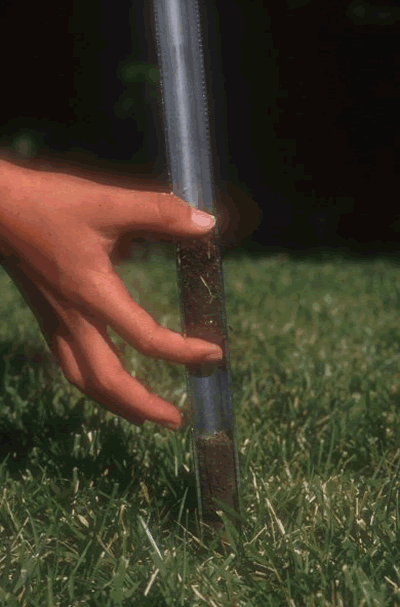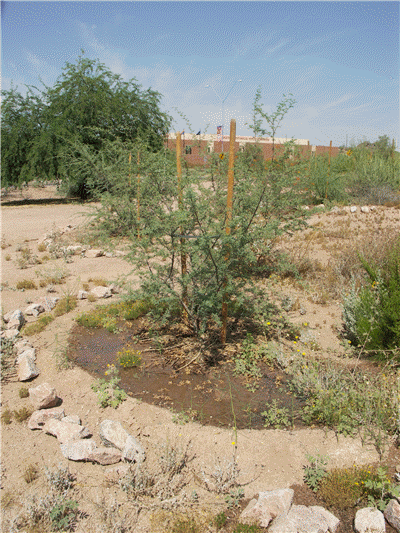Water Saving Tips
Lawn:
| □ | Inspect and fine-tune your sprinkler system. Sprinkler heads should be inspected regularly for coverage and blockage. Timers should be adjusted monthly for weather and other conditions. If monthly adjustments are not possible, then adjust the timer four times a year (March, June, October, and December). Schedule less water in October and even less in December for our cool fall and winter months. Then slightly increase water in March and apply the most in June to coincide with the dry summer months. |
| □ | Watering your lawn in two short cycles is better than one long cycle. By splitting your watering time in half and by repeating it again about one hour later, you will reduce water runoff and water more deeply. |
| □ | Apply fertilizer sparingly. Fertilization should be done only to encourage root development and to replace essential nutrients lost due to leaching and transpiration. Over-fertilization can lead to increased water use by plants. |
| □ | Evaluate your lawn irrigation sprinkler system. Old and poorly designed sprinkler systems can be very inefficient. Upgrade your existing system. Consider looking into an evapotransipration (ET) controller, the newest irrigation technology that will save you time and money. These controllers use ‘live’ ET data to determine how long and how often your irrigation system should run. |
| □ | Have your lawn aerated. Aeration will improve water penetration and encourage deeper roots. The soil plugs produced by aeration should be left on the lawn, as they can help decompose thatch. |
| □ | Hand pull weeds as they appear on your lawn. Weeds can thrive in a drought-stressed lawn. Besides being unsightly, weeds will rob your lawn of water and nutrients and push out the desirable grasses. |
| □ | If you must, apply a pre-emergent herbicide (prevents weeds). Pre-emergent herbicides, intended for use on lawns, can prevent major weed infestations. To be effective, these materials must be applied prior to the germination of weeds like Crabgrass, Spurge, and Oxalis. |
Desert Landscape:
| □ | To find out how well moisture moves through your soil, water for 30 minutes, and then wait 24 hours. Use a soil probe (contact your local conservation office or you can use a sharpened piece of rebar or very long screwdriver) to assess if the water has moved beyond the first few inches of soil. The probe will move easily through moist soil, but you will feel resistance when you reach dry soil. |

| □ | The 1-2-3 rule will help you remember how deeply to water. Small plants like groundcovers, cacti, and annuals should be watered to a depth of 1 foot (grass is 10 inches). Medium plants like shrubs should be watered to a depth of 2 feet. Large plants, like trees should be watered to a depth of 3 feet. |
| □ | Most established (usually three years or more) landscape trees and shrubs need infrequent watering. Check the soil moisture level at a depth of four to six inches. The plant should not be wilted, but the soil should be dry to the touch and crumble in the hand before watering. |
| □ | Water when it’s cool, in the early morning. Watering in midday when the weather is hot, dry, or windy can waste water due to excessive evaporation. Morning watering, compared to late evening watering, lessens the chances of mildew and soil-borne fungi. |
| □ | Build watering basins. A basin around the root area of plants will aid in the deep watering of new or established landscape trees and shrubs. Slowly fill the basin with water to allow the soil to accept the water without runoff. However, don’t let water remain in a pool around the plant’s root crown. Larger plants may require more than one fill-up per watering cycle. (If your plants are on drip, a basin is not necessary). |

| □ | All landscape plants will benefit from a two-to-three-inch protective layer of mulch on the soil surface above the root area. This can be organic mulch such as bark or compost, or inorganic mulch such as crushed granite. Mulch will moderate soil temperature (keep soil cool), reduce water evaporation between watering, and reduce undesirable weeds. Be sure to keep the mulch a few inches away from the trunks or stems of plants. |
| □ | Slopes and swales may direct water away from the garden. Channel the water or, better yet, prevent runoff by installing a drip irrigation system on slopes. |
Reduced evaporation and soil erosion will take place if water soaks in quickly.
| □ | Trees, overhead arbors, and buildings all block the sun’s rays, which results in reduced evaporation of water. You can create shade over critical areas, such as water features, with trees or structures. |